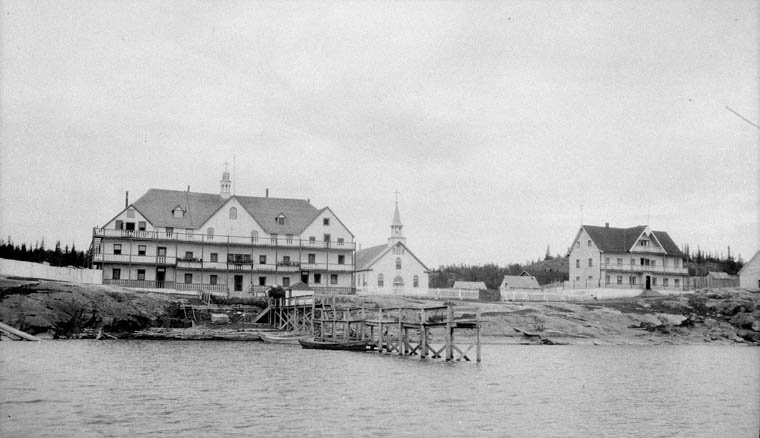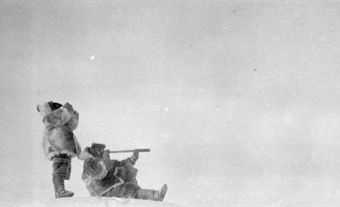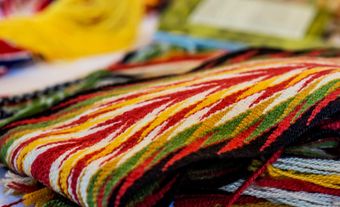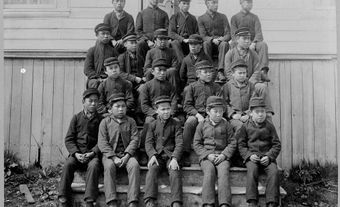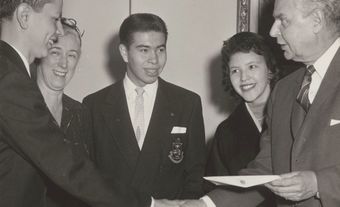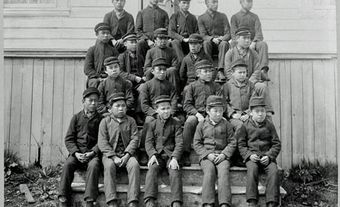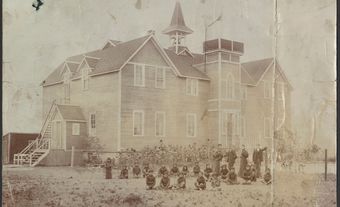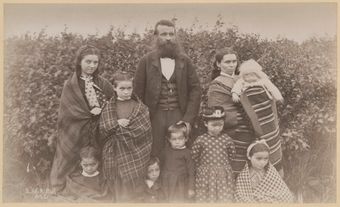Indian Residential Schools Settlement Agreement
The largest class action settlement in Canadian history to date, the Indian Residential Schools Settlement Agreement (IRSSA) recognized the damage inflicted on Indigenous peoples by residential schools in Canada and established a multi-billion-dollar fund to help former students in their recovery. The IRSSA, which came into effect in September 2007, has five main components: the Common Experience Payment, Independent Assessment Process, the Truth and Reconciliation Commission, Commemoration, and Health and Healing Services.
The Residential School System
While there were residential schools in Canada as early as the 17th century in New France, the residential school system did not really develop until after the passage of the Indian Act in 1876, which gave the federal government the right and responsibility of educating (and assimilating) Indigenous people in Canada. Beginning in the 1880s, the government cooperated with Roman Catholic and Protestant churches to establish a system of residential schools across Canada. In 1894, the Indian Act was amended, making attendance at residential schools compulsory. By 1930, when the system was at its peak, there were about 80 schools across Canada, mostly in the western provinces and the territories, although some existed in north-western Ontario and in northern Québec as well. While some of the educators were dedicated, the experience was traumatic for many Indigenous children, who were removed from their families and subjected to harsh discipline, the devaluation of their culture and religion, and even physical and sexual abuse. In 1969, the government decided to end its partnership with the churches, and students were gradually integrated into the provincial school systems, although the last residential school did not close until 1996. About 150,000 Indigenous youth attended residential schools from the 1880s to 1990s, and it was estimated that 80-90,000 former students would be affected by the Indian Residential Schools Settlement Agreement.
The Indian Residential Schools Settlement Agreement (IRSSA)
Indigenous communities, governments, and church organizations have long struggled to heal the wounds inflicted by the residential school system. From the 1980s on, former students launched legal campaigns to push the government and churches to recognize the abuses of the system, and to provide some compensation. In 1998, the federal government issued a Statement of Reconciliation that acknowledged the abuses suffered by former students, and established the multi-million-dollar Aboriginal Healing Foundation. The Alternative Dispute Resolution process was launched in 2003, providing an out-of-court mechanism for determining compensation and offering psychological support. The more comprehensive IRSSA, which came into effect on 19 September 2007, resulted from discussions between representatives of former students, the Assembly of First Nations and other Indigenous organizations, the involved churches, and the federal government.
Common Experience Payment (CEP)
Under the Indian Residential Schools Settlement Agreement, $1.9 billion was set aside for all former residents of the schools. Every former student would receive $10,000 for the first year of schooling, and $3,000 for each subsequent year. According to Indigenous and Northern Affairs Canada (INAC), 98 per cent of the estimated 80,000 eligible former students had received payment by the end of December 2012, with over $1.6 billion approved for payment.
Independent Assessment Process (IAP)
In addition to the Common Experience Payment, funds were allocated for the Independent Assessment Process (IAP), an out-of-court process for resolving claims of sexual abuse and serious physical and psychological abuse. As of 31 December 2012, over $1.7 billion had been issued through the IAP. According to Dan Ish, chief adjudicator of the Indian Residential School Adjudication Secretariat, around three times more applications were received than expected, and the IAP is forecast to continue hearings until around 2017.
Truth and Reconciliation Commission (TRC)
The Settlement Agreement also set aside $60 million for a five-year Truth and Reconciliation Commission that would provide opportunities for individuals, families, and communities to share their experiences. The Commission, established in 2008, was directed to raise public awareness through national events (e.g., Winnipeg in June 2010; Inuvik, NWT, in June 2011; Halifax in October 2011; Saskatoon in June 2012), and its support of regional and local activities. It would also create a “comprehensive historical record” on the residential schools (and, budget permitting, a research centre). By August 2012, the federal government had released over 941,000 documents to the TRC related to residential schools.
The TRC presented its findings in a series of reports in June 2015, with a final complete version of the report released in December 2015. The final report, Honouring the Truth, Reconciling for the Future, documented the tragic experiences of the approximately 150,000 Canadian residential school survivors.
Commemoration
An important aspect of the Indian Residential Schools Settlement Agreement was the emphasis on acknowledging the impact of residential schools and honouring the experiences of former students, as well as their families and communities. To this end, the Settlement Agreement established a fund of $20 million for commemorative projects. This process involved the Truth and Reconciliation Commission (TRC), which would review and recommend proposals, and Aboriginal Affairs and Northern Development Canada (AANDC), which would allocate the funds (see Federal Departments of Indigenous and Northern Affairs). In 2011, for example, the TRC recommended 72 proposals (three of these were subsequently withdrawn), and the final 69 projects received a total of $8.5 million from the AANDC.
Health and Healing Services
The Settlement Agreement also included $125 million for the Aboriginal Healing Foundation (AHF), and it established the Indian Residential Schools Resolution Health Support Program. This program would provide support for former students in terms of mental and emotional health, with the services provided by elders and Indigenous community health workers as well as psychologists and social workers.
Criticism
While the Indian Residential Schools Settlement Agreement (IRSSA) has distributed large amounts of money in compensation and assisted residential school survivors in their recovery, the system is also open to abuse. For instance, some former students who applied for additional compensation under the Independent Assessment Process (IAP) were the victims of unethical private lawyers, who charged their clients high fees in addition to the 15 per cent they received from the Canadian government. While the Settlement stated that lawyers could charge their clients up to 15 per cent for difficult cases, many lawyers routinely charged this percentage, and others applied improper interest, fees, and penalties. Chief adjudicator Dan Ish led investigations into several private lawyers involved in the IAP that led to one disbarment and an expulsion from the IRRSA, among other penalties.
Residential Schools in Newfoundland and Labrador
The benefits of federal compensation packages excluded survivors of residential schools in Newfoundland and Labrador. Since Canada did not establish or operate residential schools in that province (Newfoundland was not part of Canada when the schools began operating), the federal government argued that it was not responsible for compensating former students. After survivors launched a class-action lawsuit against the government, a settlement of $50 million was reached on 10 May 2016. The settlement was approved by Newfoundland and Labrador Supreme Court Justice Robert Stack on 28 September 2016. On 24 November 2017, Prime Minister Justin Trudeau formally apologized to survivors of residential schools in Newfoundland and Labrador. More than 800 survivors in the province will now have some closure.
Did You Know?
Historica Canada, using data supplied by the National Centre for Truth and Reconciliation at the University of Manitoba, has created a map (see below) of all residential schools in Canada. Part of a larger project by Historica Canada called the Residential Schools Awareness Program, the map includes the location, name, religious denomination, opening and closing dates, and any other names by which the schools were known.
Names of Children Who Died in Residential Schools Released
On 30 September 2019, the names of 2800 children who died in residential schools in Canada were released by the National Centre for Truth and Reconciliation in a ceremony in Gatineau, Quebec (see Truth and Reconciliation Commission). The ceremony was the culmination of years of archival research of government and church records dealing with Indigenous children in 80 schools across the country, with records going back as far as the 1890s. According to archivists, another 1600 children who died in residential schools remain unnamed, and researchers continue to pore over records to discover their identities.
The names and schools of the children were displayed on a huge 47-metre long, blood-red cloth banner. Tia-o-qui-aht First Nation Elder Dr. Barney Williams, a residential school survivor and member of the Indian Residential School Survivor Committee (an advisory body to the Truth and Reconciliation Commission), believes that the ceremony was important to ensure that the children who died are not forgotten: “Today is a special day not only for myself but for thousands of others, like me, across the country to finally bring recognition and honour to our school chums, to our cousins, our nephews, to our nieces that were forgotten.” To Elder Williams, the unveiling of the 2800 names was a “heartwarming” and “very emotional” moment for himself and thousands of Indigenous families across Canada.

 Share on Facebook
Share on Facebook Share on X
Share on X Share by Email
Share by Email Share on Google Classroom
Share on Google Classroom
